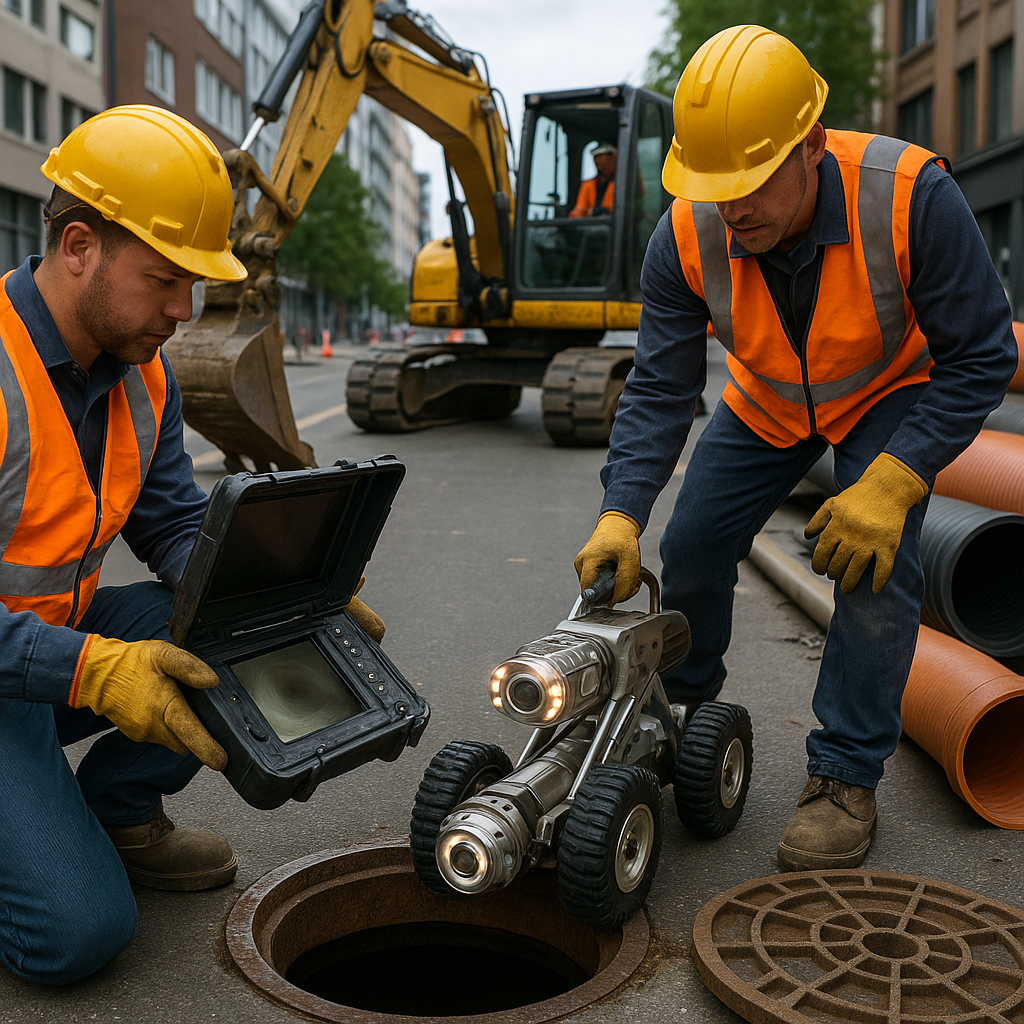Revolutionizing Sewer Inspection: Top Innovations for 2024
Explore cutting-edge sewer inspection innovations of 2024, boosting precision, safety, and efficiency.

Revolutionizing Sewer Inspection: Top Innovations for 2024
Introduction
In 2024, the sewer inspection industry is undergoing transformative changes driven by technological advancements and the growing demand for smart infrastructure. These innovations not only enhance inspection accuracy but also significantly improve worker safety and regulatory compliance. This article delves into the latest advancements, market trends, and best practices that are reshaping sewer inspections.
New Technologies and Equipment
Robotic Camera Systems
Robotic camera systems have become a staple in modern sewer inspections. These systems offer high-definition, panoramic, and 360-degree views, allowing for detailed and real-time video inspections. The introduction of these systems has significantly reduced the need for human entry into confined and hazardous sewer environments, enhancing worker safety and inspection precision.
- Benefits:
- Enhanced visibility and coverage
- Reduced human exposure to hazards
- Improved accuracy in identifying defects
Sonar and LiDAR Technologies
The integration of sonar and LiDAR technologies has revolutionized the way sewer interiors are mapped. These technologies enable the creation of precise 3D models, which help in accurately assessing pipe conditions and identifying issues such as blockages or leaks.
- Applications:
- Mapping pipe depth and location
- Detecting structural defects
- Supporting maintenance planning
AI and Deep Learning
Artificial Intelligence (AI) and Deep Learning (DL) are at the forefront of automating defect detection. By analyzing images from multi-sensor robotic systems, AI reduces human error and increases the reliability of inspections.
- Features:
- Automated image analysis
- Integration with cameras, LiDAR, and point clouds
- Enhanced defect detection accuracy
Industry Regulations and Standards
Compliance with environmental regulations, such as those set by the Environmental Protection Agency (EPA), is becoming more streamlined thanks to digital documentation and automated reporting systems. These tools facilitate easier audits and mitigate environmental risks.
- Challenges:
- High cost and technical demands for smaller operators
- Navigating complex regulatory landscapes
Market Trends and Business Opportunities
The sewer inspection market is poised for significant growth, with projections estimating an increase from USD 500 million in 2024 to USD 800 million by 2033. This growth is fueled by technological advancements and investments in urban infrastructure.
Opportunities in Smart Cities
Smart city initiatives present lucrative opportunities for deploying advanced inspection technologies that incorporate AI, real-time monitoring, and data analytics.
- Market Niches:
- Cost-effective solutions for smaller municipalities
- Scalable inspection technologies
Safety Protocols and Best Practices
Enhancing Worker Safety
Remote-controlled robotic inspections and real-time video feeds are pivotal in reducing worker exposure to hazardous environments.
- Safety Tools:
- Portable gas detectors
- Digital safety logs
Environmental Monitoring
The use of sensors for environmental monitoring aids in preventing sewage spills and supports proactive maintenance strategies.
Recent Case Studies and Success Stories
While specific case studies are not detailed here, companies like Insight Vision and Sewer AI have successfully implemented AI-driven multi-sensor robotic systems, achieving higher accuracy and operational efficiency in urban infrastructure maintenance.
Cost and Pricing Information
Sewer line camera inspections are typically cost-effective, utilizing flexible rods with HD cameras and LED lights. These inspections help in avoiding costly excavations by providing non-intrusive diagnostics.
- Investment Considerations:
- High initial costs for advanced technologies
- Long-term cost savings through targeted repairs and predictive maintenance
Conclusion
In summary, sewer inspection innovations in 2024 are characterized by the integration of robotic cameras, sonar/LiDAR 3D mapping, AI-powered defect detection, and digital safety and environmental monitoring. These advances improve inspection precision, worker safety, regulatory compliance, and cost efficiency, positioning the industry for growth amid increasing urban infrastructure demands and smart city developments.